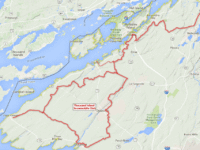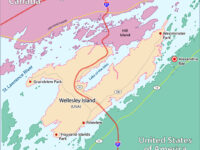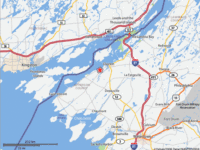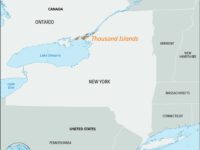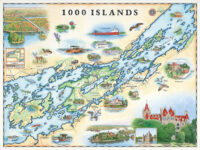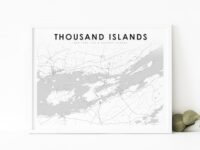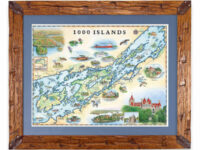The Thousand Islands region, straddling the US-Canadian border in northern New York State and southeastern Ontario, is a breathtaking archipelago of over 1,800 islands. While the name implies exactly 1,000 islands, the criteria for inclusion are that the island must be above water year-round, possess at least one tree, and cover a minimum area of one square foot. This unique geography creates a stunning tapestry of waterways, rocky shores, and lush vegetation, making it a popular destination for boating, fishing, and sightseeing.
Navigating this intricate network of islands requires a detailed map, often available in nautical charts or tourist brochures. These maps highlight the main channels of the St. Lawrence River, marking navigable routes and identifying prominent landmarks. They also showcase the locations of various communities, including Alexandria Bay, Clayton, and Gananoque, which serve as gateways to the islands. The maps are crucial for boaters, helping them avoid shallow areas and navigate safely through the sometimes-challenging currents.
The Thousand Islands region boasts a rich history, and the maps often reflect this. Many islands are named after their former or current owners, and some feature historical landmarks such as lighthouses, castles, and historic homes. Boldt Castle, a massive, unfinished mansion on Heart Island, is a particularly prominent feature on many maps, drawing visitors from around the world. Other historical sites, like the Antique Boat Museum in Clayton, offer insights into the region’s maritime heritage.
Beyond navigation and historical context, maps of the Thousand Islands also serve as guides to recreational opportunities. They identify popular fishing spots, secluded anchorages, and scenic hiking trails on the larger islands. Many maps also indicate the locations of marinas, boat launches, and public parks, making it easier for visitors to plan their activities. For example, Wellesley Island State Park, one of the largest islands, offers camping, hiking, and stunning views of the surrounding waterways.
In recent years, digital mapping technologies have further enhanced the experience of exploring the Thousand Islands. GPS-enabled maps and mobile apps provide real-time location data and navigation assistance, making it easier than ever to discover hidden gems and navigate the complex waterways. However, traditional paper maps remain valuable resources, providing a broader overview of the region and serving as backups in areas with limited cell service. Whether using a paper chart or a digital app, a map is essential for unlocking the beauty and adventure that the Thousand Islands have to offer.


